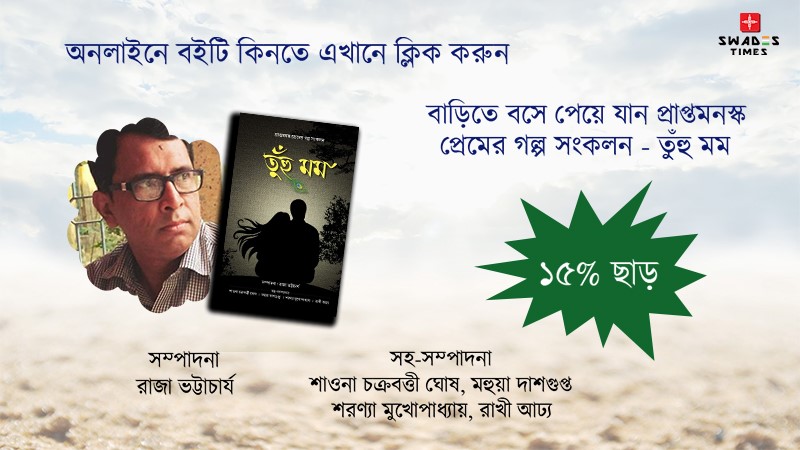Sukumar Ray's book ektu jalpai kothay (where do I have a drop of water) is known for the traveller's struggle to quench his thirst by asking everyone for an iota of water, Palashpai, a hamlet near Jhikira in Howrah district, on the bank of the turbulent Mundeswari river channel, is 60 kilometres from Kolkata in Hooghly's rural map and must remind you of the likes of the great poet had ever authored.
When People in tireless effort are seeking for the red Palash flower and mostly rush to the Birbhum or Bankura Palashpai in Hooghly used to satisfy the flower lovers back to ten years or more. Now the abundance of these flowers has been restricted, though but the trace of these flowers bears a testimony, however small. You may be put on spell once you stand before the village and enchanted with the nature’s niggardliness.
A few years back the Palash trees alongside the river channel would beatify the area, with the riverain ambience all along. Dotted with the rich cultivation of paddy fields and ample trees surrounded are the main attraction here. The two sides of the river channel are connected with the wooden bridge known as Hurhura bridge. With the expanded river channel and the tree line on either side of the channel Palashpai may be your ideal getaway in serene rural Bengal. The wide and spate Mundeswari channel during monsoon attracts many of the two districts namely Howrah and Hooghly. During winter people come here for junketing close to the river. The fishing boats on the river are regular.
At the left the billowing Mundeswai channel confluences with the Damodar and the right the origin of the river over Barakar. Walking alongside the river channel on embanked mooram road rich with trees in plenty is romantic here. The offshoots almost touch the ripples of water depicting a typical rural Bengal. The plenty of vegetables with the dew on is an another attraction. Left side of Mundeswari channel being diverted upstream blows in Joypur, Amta, Mankur in Bagnan, Dhayanakheri and Howrah’s one island Bhatora at the confluence with Damodar , Rupnarayan and the Gadiara where the three rivers meet.
ADVERTISEMENT

The bend of rivers cover several villages and the riparians find it use on commercial purposes –from fish catching to vegetables transportation carried on boats. On way to Palashpai the greenery spreads over wherever eyes lead to and the plants thrust up down to the river. Claimed to be in Hooghly district Palashpai links up with several villages like Talghar, vairabpur, hayetpur, Rajhati,Nandanpur,- sabalsingapur, Harischak, Natibpur,Balpai and other villages where even in some villages the post office, Banks and college are non-existent.
Original Mundeswari river is 20 km upstream from Muchighata near palashpai. Considered to be a village in Khanakul II Block this non-descript river spot becomes vibrant in winter with various village fairs, especially Rush mela is organised every year with much fanfare. Risky and rickety wooden bridge is the only source of transportation of light motorable vehicles.
From here Joypur in Howrah district can be reached. More than 200-year old shib mandir is the attraction, with sprawling area and large water body. People devote to the mandirand yearly utsov around shib puja is organized here. It is believed that ailing patient becomes cure once he gets bath in this holy pond.
At midnight none dares to come here because they believe in Mahadeb comes out of the Mandir and gets bath in that pond. A small township named Jhikira is near Joypur. Jhikira bears the heritage of big building today most of the buildings are dilapidated due to owners being shifted for industry in Howrah and central part of it either iron or other business.
Most of the village people now crowd in Kolkata and Howrah areas for profession due to train services from Amta and easy transport services. As they don’t have money to struggle along they rush to such areas leaving their cultivable lands for agriculture. Many shelve up cultivation and rush to towns.
Despite every potential of considering this place as travel industry being implemented much endeavor is not seen to develop this unique place.
Amid the patulous trees and rippling rivers there are many to see the sights. Journey by hired boat riding on the river and sopping with rain is an unforgettable experience. It is nice to see the sun declining to the west with the glow of red being shared with colour of palash flowers near the river bank channel.
Return of the birds to the nests in a flock amidst the colour of red all-around creates an exhausted azure and the place is accentuated with yelp from the nearby bushes with the crimson light the return of fishermen from the river channel and the sound dashed by the helm towards the shore is equally mesmerizing.
Meanwhile return journey reminds one for home. How to reach?
Take the Howrah-Amta local train from Howrah and get down at Amta.
Magic cars are available from here to Muchghata via Jhikira.
By road one can reach here via Amta either from Munsirhat or via Kalatala from Ranihati on NH-6.
STAYING: No accommodation is available except irrigation bungalow. Many eateries are available here.




0 comments